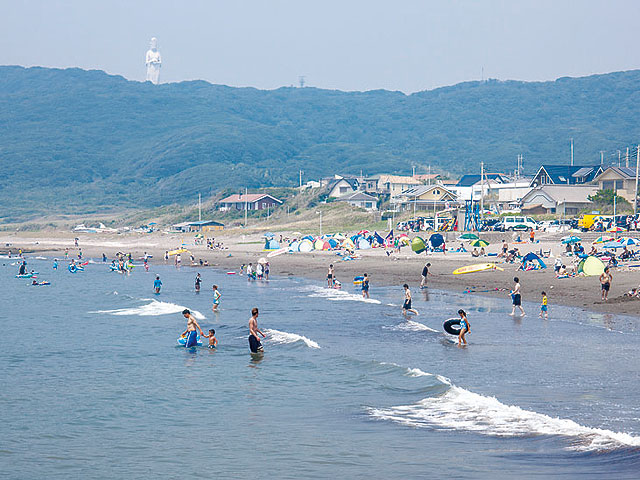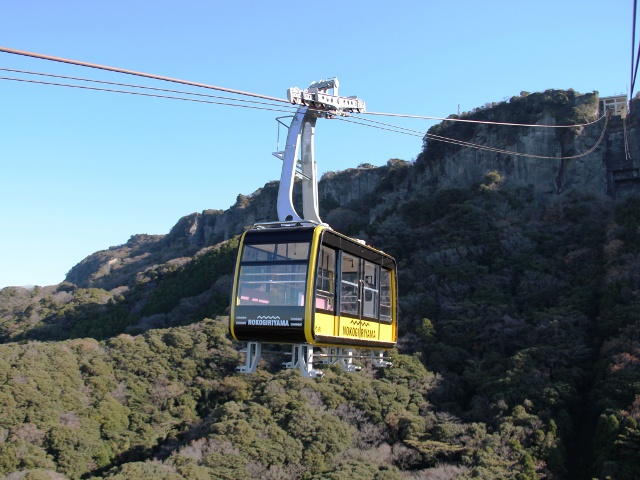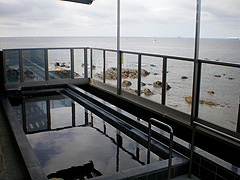
Shinmaiko swimming beach
透明度が高く、比較的ゆったりと過ごせる。天気のよい日には海の向こうに横浜ベイブリッジやランドマークタワー、運がよければ富士山が見られることも。背後には豊かな緑に囲まれた東京湾観音があり、自然を満喫してリフレッシュできる。
Info
Business Hours
Price
Spot Category

The information provided reflects the details available at the time of the survey.
Please note that facility details may change due to the facility’s circumstances, so please check for the latest information before visiting.
This content has been translated using machine translation.
Information provided by: JTB Publishing
The content uses an automatic translation service, which is not always accurate.
The translated content may be different from the original meaning, so please understand and use it.

透明度が高く、比較的ゆったりと過ごせる。天気のよい日には海の向こうに横浜ベイブリッジやランドマークタワー、運がよければ富士山が見られることも。背後には豊かな緑に囲まれた東京湾観音があり、自然を満喫してリフレッシュできる。

東京湾を一望できる露天風呂がある絶景の温泉宿で、日帰り入浴が可能だ。内湯からも大海原が望める。泉質は皮ふを滑らかにする炭酸水素塩泉で、「美肌の湯」ともいわれている。開放感のある食事処(休憩所)のほか、1階売店では店オリジナルの体によい“かじめ”の味噌汁の試食など色々楽しめる。宿泊の部屋は全室オーシャンビュー・壺風呂付きで平日2食付1万7900円~。料理は舟盛り(活魚入り)が入るなど、併設の漁師料理かなやの新鮮な魚貝料理が味わえる。

鋸山でのハイキングや内房での海水浴帰りに立ち寄り入浴ができる便利な宿。安政元年(1854)の創業で、約170年の歴史をもつ。泉質は、神経痛や皮ふ病などに効能があるという弱食塩泉。入浴昼食セット2020円~(要予約)。宿泊は平日1泊2食付1万1000円~。また、ハイキングの場合は1日駐車700円で1人温泉入浴可。

On the occasion of the Ojō Kōki, who was appointed as the lord of Osugasō, Shimousa Province, he was invited by Shinano Suwa Taisha Shrine as the god of the lord of the territory. He has since been revered as the god of industrial development, the god of wisdom, and in recent years as the god of advanced learning. The present main shrine is of the 1853 (Kaei 6) construction, and the annual festival "Sawara no Taisai (Autumn Festival)", which takes place in October every year, is designated as a national important intangible folk cultural property.

The temple of the Tendai sect, known as Narikiri (Namikiri), is a temple of the Tendai sect that collects the thick faith of the fishing people for great fishing prayers and sea protection. The main priest, Fudō Myōō, was reportedly picked up from the sea by the wives of the fishermen of the land during the middle Kamakura period and laid them here to rest. The thatched-roofed Fudō, which houses Fudō Myo, is designated as a national important cultural property, and is presumed to have been erected during the Muromachi period.

Western-style Mie-bashi, a masonry method, on the lower Nagao River at Takiguchi, Shirahama. Because there are three arches, it is not really glasses, but it has come to be called a glasses bridge from the appearance of moving to the river. The bridge was built in Meiji 21 (1888) with a donation of 399 yen and 40 yen from the villagers. He said he had walked across the river before the construction. It is a sturdy bridge that, in wartime, tanks passed through it without being broken by the Great Kanto Earthquake. Repair work was carried out in 1977 and 1993, and the figure remains at the time of construction. Prefectural Designated Tangible Cultural Property. Japan's Meihashi Hyakusyo.
This website uses cookies so that we can provide you with the best user experience possible. Cookie information is stored in your browser and performs functions such as recognising you when you return to our website and helping our team to understand which sections of the website you find most interesting and useful.
Strictly Necessary Cookie should be enabled at all times so that we can save your preferences for cookie settings.
If you disable this cookie, we will not be able to save your preferences. This means that every time you visit this website you will need to enable or disable cookies again.
